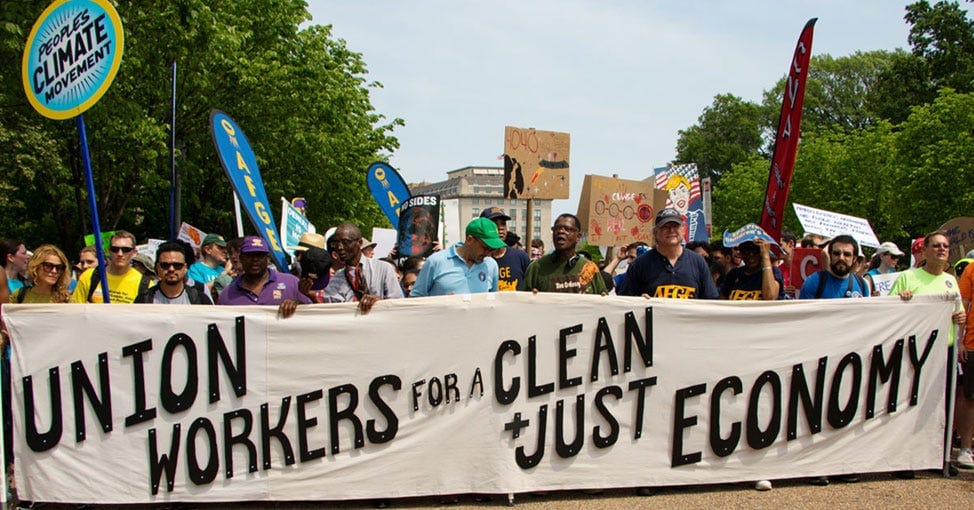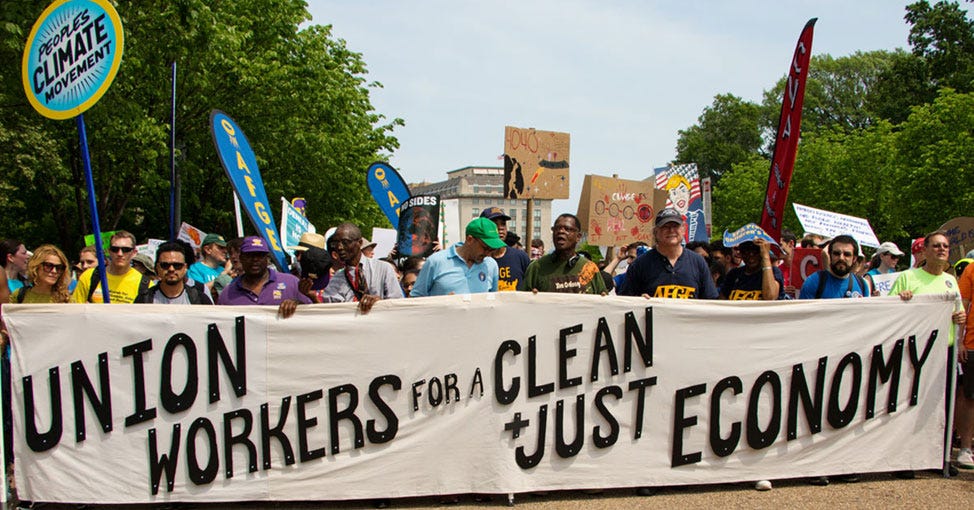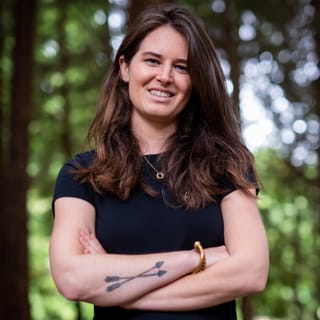
Climate + Labor: The Intersection of Climate Justice
Part IV: State of Labor Movements
🤓 Bite-Sized Knurd: Climate justice has been at the forefront of the labor movement. What can we learn from the labor movement as the climate crisis accelerates?
Read on for more…
For our final piece on Labor this September, it’s crucial that we string together the work that the labor movement has contributed to fighting the climate crisis.
No one issue is hermetically sealed. We know that many of the issues we face today are all connected. Tying these connections together only helps us to address the larger systemic problems so that we can build a people & planet first future.

Labor Rights is Climate Justice
As the constant growth mindset of capitalism continues unfettered, many workers suffer. The climate cost of capitalism on workers can be staggering without regulations. The labor issues like safe drinking water, exposure to toxic chemicals, poor working conditions, sick leave, etc. are all climate issues.
In fact, some of the first labor fights were related to climate. Coal mining has a deep history with labor. The United Mine Workers of America was founded back in 1890 when miners demanded safer working conditions, collective bargaining power, and independence from the mine owners and company that controlled their housing and other essential needs.
Without realizing it, these miners were demanding climate justice in their community. Miners are most impacted by the toxic chemicals they inhale, but their families who lived in the surrounding towns also suffered health risks from living near the mines. Workers often bear the brunt of unsafe air, water, and land because they often live by the facilities that produce the hazardous materials whether it be fossil fuels or coal.
Climate Justice & Community Care
Fighting for safer air in communities that are most impacted continues to this day. In my backyard, the Chevron Refinery in Richmond, CA is a microcosm of what many communities face. It is a tale of two cities.
The Chevron Refinery is a staple in the Richmond community. It has employed thousands of workers since its opening in 1902. The wealthier areas that are upwind from the refinery have flourished. But North Richmond, which is over 80% Black, has suffered. Deregulation spurred by Ronald Reagan allowed Chevron to operate without any limitations on the toxic chemicals that spew out. The lived reality of the residents downwind of the plant is unfathomable, but it happened here in the U.S.
“Finding the leaves on the tree burnt crisp overnight from chemical exposure, or going outside and the air would be so foul that you would literally have to grab your nose and try to not breathe the air and go back in the house and wait until it was cleared up.”
Who wants to live like that?
These communities are “on the frontline of the chemical assault.” Richmond children have roughly twice the rate of asthma as their neighbors countywide. Regulating the plan is literally a life and death issue for its residents.
The turning point came when activists and the Richmond Progressive Alliance began to fight back. They’ve rallied to help elect community leaders to the City government to combat Chevron’s influence. The City Council has passed air regulation reform and even filed a lawsuit against Chevron alleging public nuisance and negligence.
The Modern Labor Movement
What is common in the labor movement’s history is the importance of community care. The miners recognized that it was their role to keep their community safe.
The people of Richmond used community care to build solidarity against a major fossil fuel giant. Taking the time to do the actual work of supporting the community helped them flip the city government and see real reforms enacted.
Community is at the heart of the labor movement and it will be essential as we continue to experience the escalating threats of the climate crisis.
A few weeks ago, we discussed Chris Smalls’ efforts to unionize the first Amazon warehouse. He built pro-union support by fostering community. He hosted bonfires, handed out food to workers at the bus stop, listened to the worker’s concerns, validated their experiences, and built trust. Trust and the feeling that the workers were a community helped them to see the power that they held in demanding safe working conditions.
The climate crisis touches so many of our modern issues. We can learn from the labor movement’s focus on community support to help us weather these crises. Where do you find and foster community?
🤓 Knurd Out
This Tuesday, I hosted a training for campaigns, voter outreach orgs, and activists to talk about how to use social media amplification to turnout voters before November’s Midterm elections. I hope you check it out!
You can also check out Knurdology’s Social Amplification Guide for more juicy social media tips.
the roots of change media Newsletter
Join the newsletter to receive the latest updates in your inbox.



